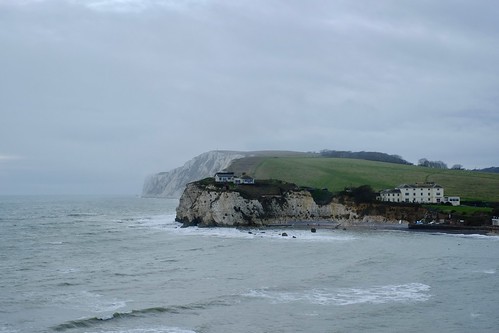PPARc is very expressed in quiescent HSCs in the normal liver and its expression decreases significantly in activated HSCs the two in vitro [21,22] and in vivo [22,23]. In culture-activated HSCs, the expression of PPARc through an adenoviral vector suppresses cell proliferation and the expression of fibrogenic genes this kind of as variety one collagen, a-SMA, and TGFb1 [21]. As a result, PPARc might be ready to return the activated HSCs to a significantly less active condition. Our previous in vitro study revealed that PEDF induces PPARc expression in each HSC-T6 cells and tradition-activated rat HSCs [eleven]. In this study, we found the EPA ethyl ester 34-mer might restore the expression of PPARc protein in HSC-T6 cells and activate HSCs in vivo. In addition, PPARc is evidently the significant mediator liable for 34-mer induced HSC inactivation. This is based on our observation that the inhibitory outcomes of the 34-mer on PDGFR expression and PDGF-induced HSC-T6 proliferation are drastically attenuated by pretreatment of the cells with a PPARc antagonist or particular siRNA. Not only are the results of  this study in line with our earlier obtaining but they also assist the proposition that PEDF may possibly defend folks from liver cirrhosis by sustaining PPARc amounts in HSCs. The molecular events related with PPARc down-regulation in activated HSCs stay largely mysterious. A modern examine indicated that the elements of the Wnt pathway, such as Wnt ligands, Frizzled receptors and LRP6 co-receptor, steadily increased in the course of the method of activating HSCs in culture [fifteen]. [fifteen,16]. These previous results advise that PPARc is negatively connected with Wnt signaling. In this research, we confirmed also that the nuclear b-catenin degree was decreased ahead of the PPARc degree commenced to boost in HSC-T6 cells. This indicates a possible inhibition11790767 of Wnt signaling that allows PPARc induction. Apparently, it has been shown that PEDF can effectively block the Wnt-induced nuclear translocation of b-catenin in ARPE-19 cells [24]. Moreover, binding of PEDF to recombinant LRP6 has been demonstrated by a co-precipitation assay that sales opportunities to the blockade of Wnt-induced LRP6-Frizzled receptor dimerization, an important step in canonical Wnt signaling [24]. Our findings recommend that the 34-mer peptide could also bear this kind of physical interaction with LRP6. PDGF signaling by means of the PDGF receptors (pdgfr-a and-b) is of excellent significance in ECM manufacturing by way of HSCs and expansion of activated HSCs in the early stage of CCl4-induced liver fibrosis [eighteen,25]. Our review revealed that the 34-mer suppresses the expression of the PDGF receptors in HSC-T6 cells. Moreover, pretreatment of the cells with PPARc siRNA eliminates the inhibitory effect. These final results collectively point out that upregulation of PPARc by PEDF/34-mer is vital for interrupting the expression of PDGF receptors and PDGFmediated submit-receptor signaling in HSCs. Due to the fact HSCs are activated by PDGF, the coupling of PDGF receptor downregulation and the avoidance of PDGF-induced HSC activation strongly support the notion that PEDF abolishes the PDGF effect by attenuating its receptors. Furthermore, pretreatment with PEDF/34-mer for forty eight h is essential for considerable reduction of the ranges of pdgfr gene expression.
this study in line with our earlier obtaining but they also assist the proposition that PEDF may possibly defend folks from liver cirrhosis by sustaining PPARc amounts in HSCs. The molecular events related with PPARc down-regulation in activated HSCs stay largely mysterious. A modern examine indicated that the elements of the Wnt pathway, such as Wnt ligands, Frizzled receptors and LRP6 co-receptor, steadily increased in the course of the method of activating HSCs in culture [fifteen]. [fifteen,16]. These previous results advise that PPARc is negatively connected with Wnt signaling. In this research, we confirmed also that the nuclear b-catenin degree was decreased ahead of the PPARc degree commenced to boost in HSC-T6 cells. This indicates a possible inhibition11790767 of Wnt signaling that allows PPARc induction. Apparently, it has been shown that PEDF can effectively block the Wnt-induced nuclear translocation of b-catenin in ARPE-19 cells [24]. Moreover, binding of PEDF to recombinant LRP6 has been demonstrated by a co-precipitation assay that sales opportunities to the blockade of Wnt-induced LRP6-Frizzled receptor dimerization, an important step in canonical Wnt signaling [24]. Our findings recommend that the 34-mer peptide could also bear this kind of physical interaction with LRP6. PDGF signaling by means of the PDGF receptors (pdgfr-a and-b) is of excellent significance in ECM manufacturing by way of HSCs and expansion of activated HSCs in the early stage of CCl4-induced liver fibrosis [eighteen,25]. Our review revealed that the 34-mer suppresses the expression of the PDGF receptors in HSC-T6 cells. Moreover, pretreatment of the cells with PPARc siRNA eliminates the inhibitory effect. These final results collectively point out that upregulation of PPARc by PEDF/34-mer is vital for interrupting the expression of PDGF receptors and PDGFmediated submit-receptor signaling in HSCs. Due to the fact HSCs are activated by PDGF, the coupling of PDGF receptor downregulation and the avoidance of PDGF-induced HSC activation strongly support the notion that PEDF abolishes the PDGF effect by attenuating its receptors. Furthermore, pretreatment with PEDF/34-mer for forty eight h is essential for considerable reduction of the ranges of pdgfr gene expression.
